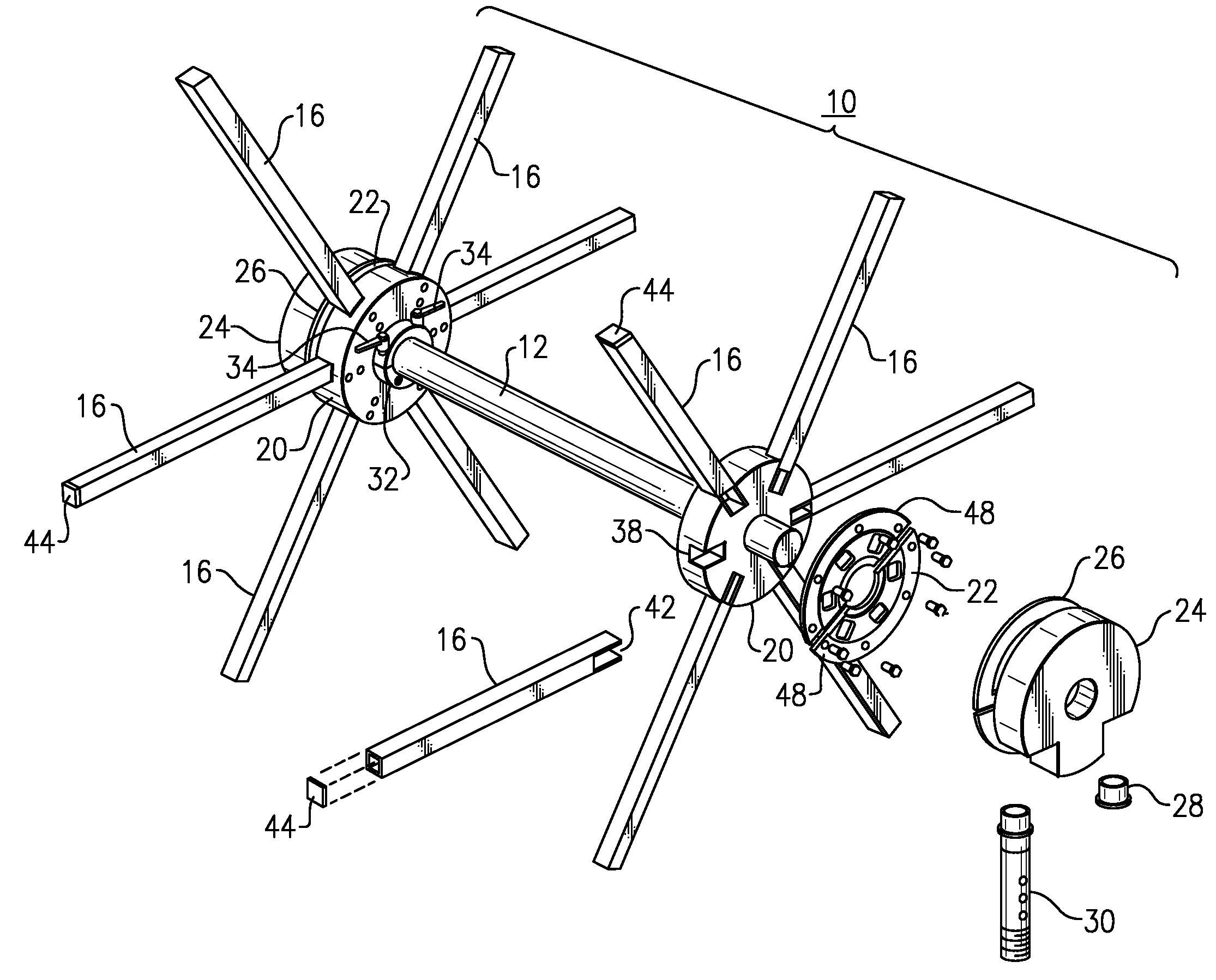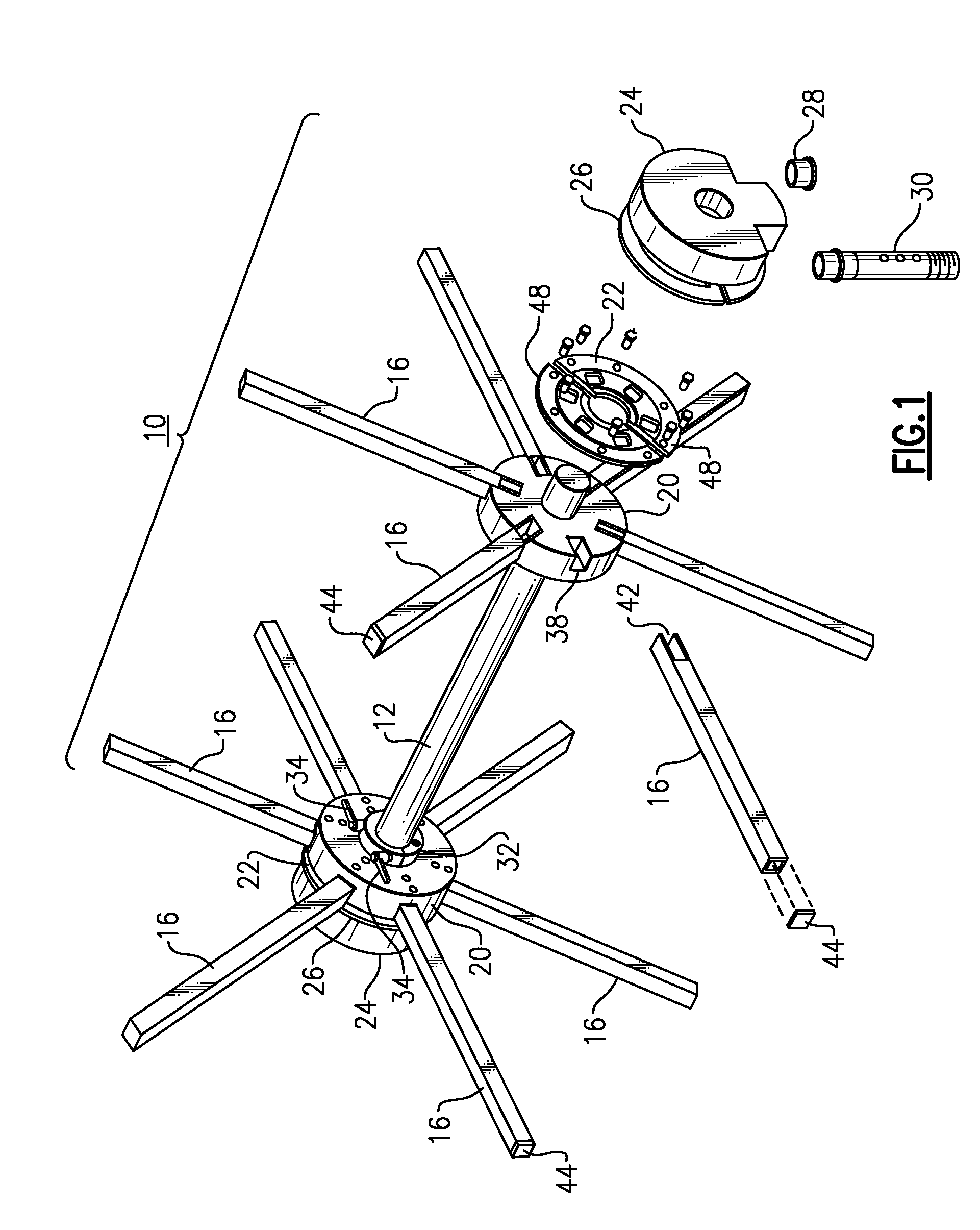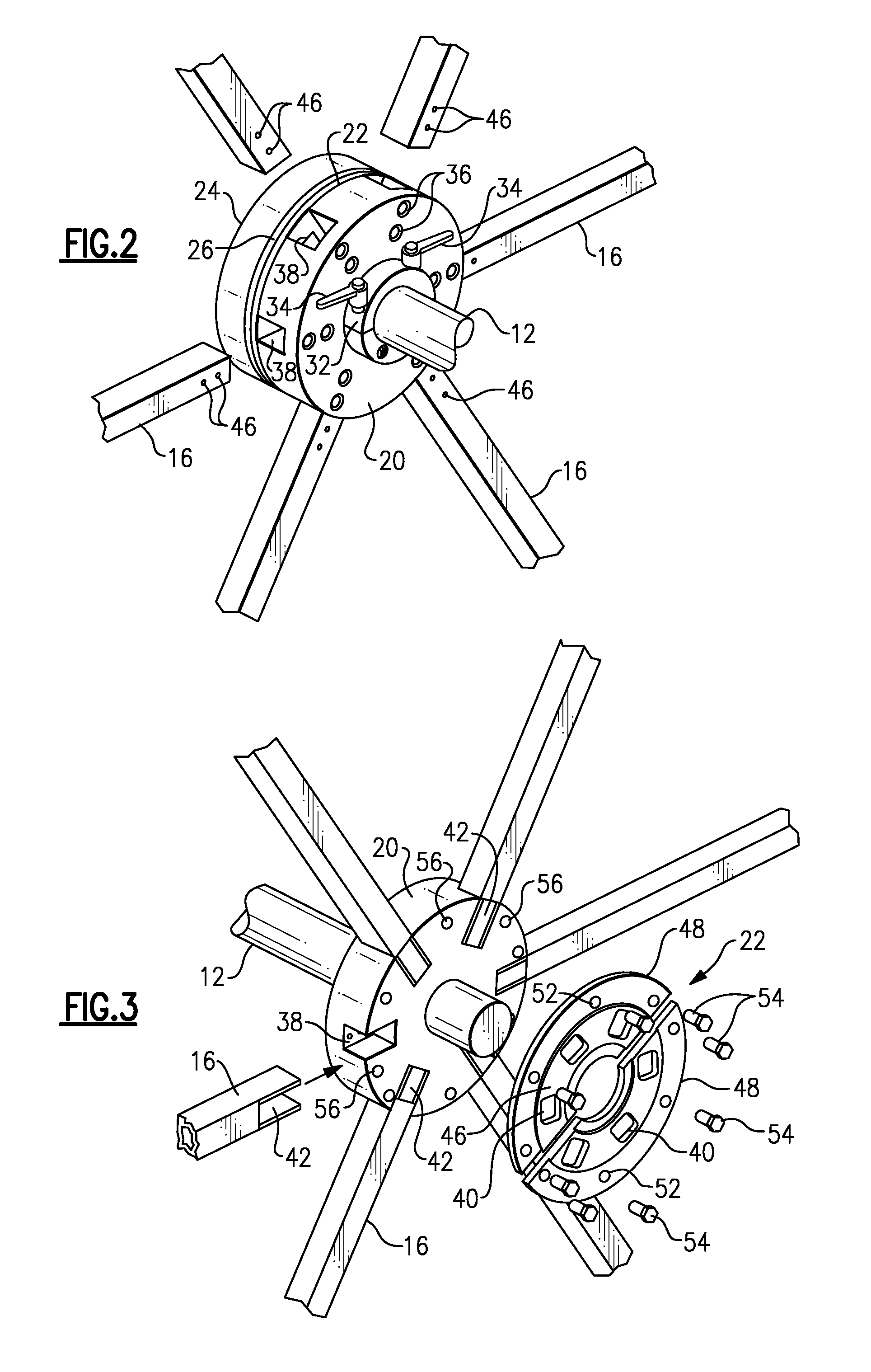Tool-less rotary vacuum wicketter assembly
a vacuum wicketter and toolless technology, applied in stacking articles, envelope/bag making machinery, paper/cardboard containers, etc., can solve the problems of plastic dust clogging the wicketter, not meant to be easily removed, and large volume of plastic dus
- Summary
- Abstract
- Description
- Claims
- Application Information
AI Technical Summary
Benefits of technology
Problems solved by technology
Method used
Image
Examples
Embodiment Construction
[0029]With reference to the Drawing, FIG. 1 illustrates a rotary transfer arrangement that may be employed in carrying plastic film articles, e.g., bags, from one station to another, for example, from a bag machine to a bag stacking station, such as a wicket plate. Here, the rotary transfer station is in the form of a vacuum wicketter 10, in which there is a rotary shaft 12 that carries a pair of hub assemblies 14, 14, spaced a pre-set distance from one another, and each of which carries an array of vacuum pickup arms 16. These arms project radially from the hub assemblies and are angularly spaced about the axis of the hub assemblies. In this example, for each hub assembly there are six arms 16, at sixty-degree spacing. However, rotary wicketters may have eight arm arrays, in which the arms are spaced at forty-five degree intervals. Other wicketters have other configurations, e.g., nine arms at forty-degree intervals.
[0030]As shown with further reference to FIGS. 2 and 3, the hub as...
PUM
 Login to View More
Login to View More Abstract
Description
Claims
Application Information
 Login to View More
Login to View More - R&D
- Intellectual Property
- Life Sciences
- Materials
- Tech Scout
- Unparalleled Data Quality
- Higher Quality Content
- 60% Fewer Hallucinations
Browse by: Latest US Patents, China's latest patents, Technical Efficacy Thesaurus, Application Domain, Technology Topic, Popular Technical Reports.
© 2025 PatSnap. All rights reserved.Legal|Privacy policy|Modern Slavery Act Transparency Statement|Sitemap|About US| Contact US: help@patsnap.com



